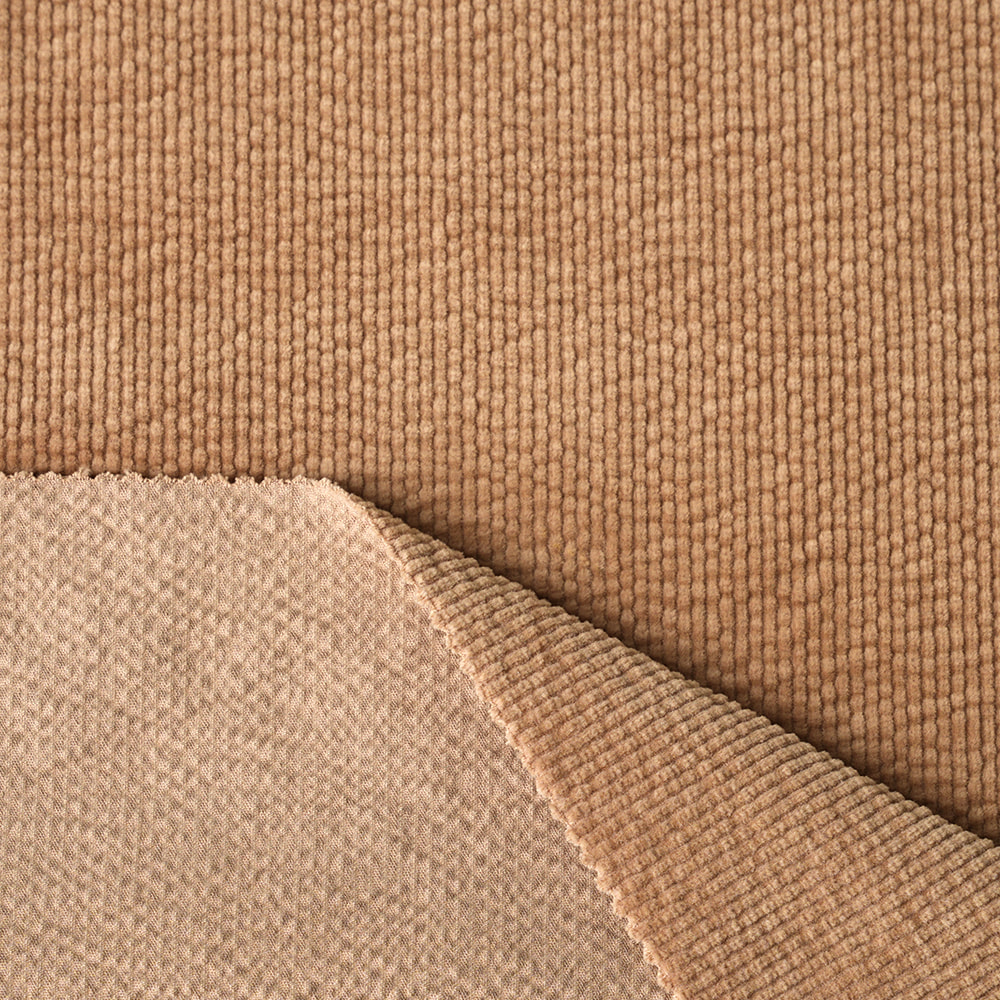Textile Industry Zone, East Hutang Town, Wujin District,213100 Changzhou,China
The breathability, moisture absorption and warmth retention of Bi-Stretch Corduroy Fabric are important indicators of its performance, and these characteristics directly affect the wearing experience and applicable scenarios. The following is a detailed analysis of its breathability, moisture absorption and warmth retention:
Breathability
Definition and Importance: Breathability refers to the ability of the fabric to allow air to pass through, which determines whether the clothing can effectively expel moisture and heat generated by the human body to maintain comfort.
Breathability Performance of Bi-Stretch Corduroy:
Bi-Stretch Corduroy is usually made of a blend of cotton, polyester or other fibers, and its breathability depends on the fiber composition and fabric structure.
If the fabric contains a higher proportion of natural fibers (such as cotton), the breathability is better because natural fibers have better air circulation capabilities.
The unique striped structure of corduroy forms tiny channels on the surface, which helps a certain degree of air flow.
However, since elastic fibers (such as spandex) may be added to bi-stretch corduroy, this may slightly reduce breathability because elastic fibers themselves have poor breathability.
Improvement method:
Increase the proportion of natural fibers.
Use thinner corduroy fabrics (such as pinstripe or low-density corduroy) to improve air circulation.
Hygroscopicity
Definition and importance: Hygroscopicity refers to the ability of a fabric to absorb and release moisture, which is essential to keep the skin dry and comfortable.
Hygroscopicity performance of two-way stretch corduroy:
Two-way stretch corduroy containing natural fibers (such as cotton) usually has good hygroscopicity because natural fibers can absorb moisture and evaporate it into the air.

If synthetic fibers (such as polyester or spandex) are added to the fabric, the hygroscopicity may be reduced because synthetic fibers themselves have poor hygroscopicity.
The striped structure of corduroy can increase the surface area of the fabric, thereby improving the hygroscopic effect.
The impact in practical application:
In a humid environment, two-way stretch corduroy may absorb moisture faster than pure synthetic fiber fabrics, but it may dry slower.
Improvement method:
Increase the proportion of natural fibers.
Apply functional finishing techniques (such as hydrophilic coating) to enhance moisture absorption and perspiration performance.
Warmth
Definition and importance: Warmth refers to the ability of fabrics to block heat loss, which is particularly important for autumn and winter clothing.
Warmth performance of two-way stretch corduroy:
Corduroy fabrics are known for their unique stripe structure, which can form an air layer on the surface of the fabric to insulate and improve warmth.
While retaining the warmth of traditional corduroy, two-way stretch corduroy enhances the fit by adding elastic fibers, making the fabric closer to the body and reducing heat loss.
Fabric thickness and stripe width also affect warmth. Thicker corduroy (such as wide stripes or high-density corduroy) generally provide better warmth.
Impact in practical applications:
Two-way stretch corduroy is suitable for making casual clothes, jackets or home clothes in autumn and winter, which are both warm and comfortable.
Improvement method:
Use higher density corduroy fabrics to increase warmth.
Combined with other thermal insulation materials (such as fleece lining) to further improve the thermal insulation effect.
Comprehensive performance comparison
Breathability vs. warmth: There is a certain trade-off between the breathability and warmth of two-way stretch corduroy. Higher warmth may mean lower breathability, so it needs to be optimized according to the specific use.
Hygroscopicity vs. comfort: Good moisture absorption helps keep the skin dry, but attention should be paid to the drying speed to avoid long-term retention of moisture and discomfort.
Balance of the three: In practical applications, the best balance of breathability, moisture absorption and warmth can be achieved by adjusting the fiber composition, fabric structure and finishing process.
Application scenarios and suggestions
Suitable scenarios:
Daily casual wear: Two-way stretch corduroy is very suitable for making casual pants, jackets or dresses in autumn and winter due to its comfort and certain warmth.
Outdoor activities: If it is waterproof or windproof, two-way stretch corduroy can also be used for light outdoor activities, but it is not recommended for high-intensity sports.
Home wear: Due to its soft touch and warmth, two-way stretch corduroy is often used to make home clothes or sofa covers.
Improvement suggestions:
For scenes that require higher breathability and moisture absorption (such as sportswear), you can consider adding functional fibers or using double-layer fabric design.
For scenes that focus on warmth (such as cold areas), you can choose thicker corduroy fabrics and combine them with inner thermal insulation materials.
Two-way stretch corduroy fabrics show balanced performance in breathability, moisture absorption and warmth. Its breathability and moisture absorption mainly depend on the fiber composition and fabric structure, while its warmth is due to the unique stripe structure of corduroy and the fit of elastic fibers. By optimizing the design and production process, its comprehensive performance can be further improved to meet the needs of different scenes.












